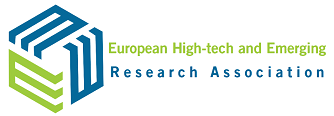Health and Survival of Moon Jellies (Aurelia Aurita) in Hand-Built Pseudo-Kreisel Aquaria
By Kathryn Schweizer, Christine Geiger, Adam Pillot, Melissa Meadows
Jellies are typically considered difficult organisms to raise in the lab by many scientists. This is due to their requirements for constant water current and the absence of corners. In the wild, jellies such as moon jellies (Aurelia aurita) rarely encounter habitats outside of the open ocean where they are part of the plankton, so they are not adapted to navigate obstacles or get out of small spaces such as the corners of aquaria. In order to conduct an experiment utilizing live moon jellies to assess their utility in bioremediation of oil spills, we designed and built 4 pseudo-kreisel aquaria to house our jellies using a limited budget and many readily-available materials.
Here, we present the methods used to construct these aquaria inexpensively (important for undergraduate research!) and evidence of their effectiveness in long-term housing of live jellies so that other researchers interested in jelly research can construct similar housing. Briefly, we removed the corners from 10 gallon aquaria and also provided for continuous circular water currents by adding quarter pieces of the sides of 5 gallon buckets attached via silicon sealant. Current was provided by spray bars that provided even water flow in all areas of the aquaria, driven by pumps in the external sump and filtration systems. We built the sump/filtration systems using 5-gallon buckets containing bio-balls and filter floss. Water was delivered to the sumps via PVC overflow plumbed into the aquaria via a bulkhead set into the glass at the desired water level. The overflows were covered with a small piece of fine screen and directly behind the spray bars in order to prevent jellies from becoming stuck as water leaves the system for filtration. Results of husbandry including survival and indicators of jelly health such as pulsing rate and holes in their bells over approximately 3 months will be presented.



